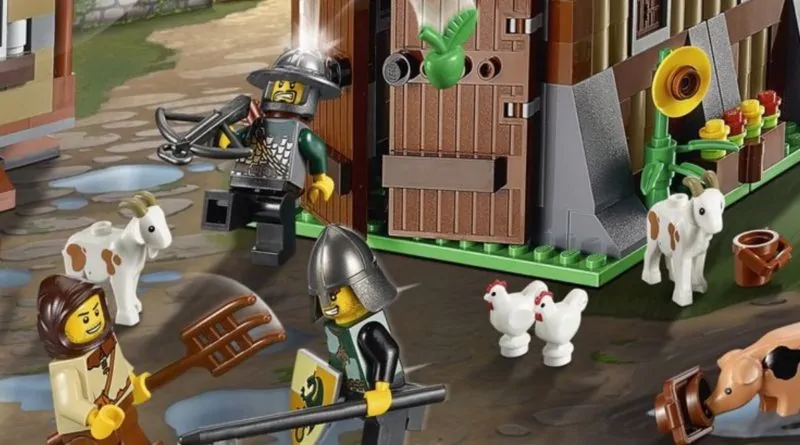LEGO designers crack the conspiracy of the long-lost LEGO goat
A team of LEGO designers have delved into the conspiracy behind the long-lost LEGO goat, revealing how the coveted animal almost returned in 2019.
The official LEGO Bits N’ Bricks podcast has made a surprise comeback today, with five new episodes that go beyond video games to discuss the Botanical Collection, LEGO sustainability and more. The last of those episodes tackles a subject at the heart of the LEGO community over the past few years: the mysterious disappearance of the LEGO goat.
First introduced in the 2011 LEGO Kingdoms set 7189 Mill Village Raid, the moulded LEGO goat element has since failed to materialise in any other models – and consequently commands an eye-watering sum on the aftermarket. (You can expect to pay anywhere from £51 for one in good condition at BrickLink.)
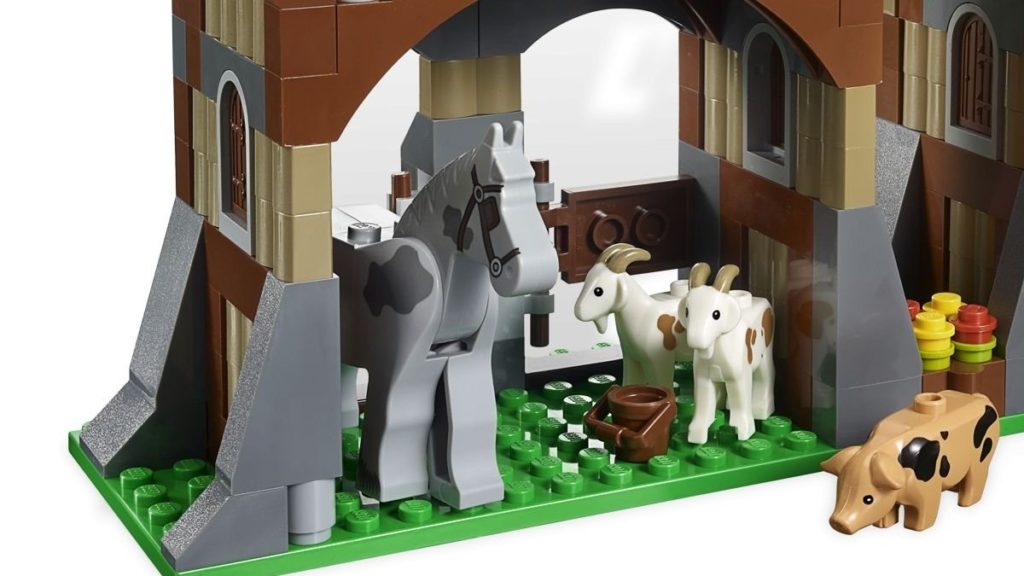
In the fifth and final episode of the sixth series of Bits N’ Bricks, hosts Brian Crecente and Ethan Vincent chart the history of the LEGO goat – from its development and launch to its premature retirement, and the efforts of LEGO designers to bring it back to the portfolio.
According to their research, 7189 Mill Village Raid was inspired by the response to 2009’s 10193 Medieval Market Village, another LEGO Castle set that stripped away knights and fortresses for a quainter look at life in the Middle Ages. The 663-piece 7189 Mill Village Raid includes a windmill, barn – and plenty of farm animals.
“[We were] talking about what animals we could do,” recalls designer Nicholas Groves. “Some like chickens and pigs were no-brainers, you need those on a farm, but what could we do that was a little different? A goat could be good. And we just started riffing on that. It could be a fun character, if he’s chewing on something he shouldn’t be chewing on, or he’s ramming the bad guy from behind.
“We could really inject some fun into that and it wouldn’t be just a static animal in the background. It could become part of the play, part of the action, which was important for this – this was a civilian farm, but we wanted to inject that action into it, that the farmers were fighting back against the bad guys and the animals were part of that rebellion, fighting back against these mean tax collectors. So we had a lot of fun riffing around the goat as a character.”
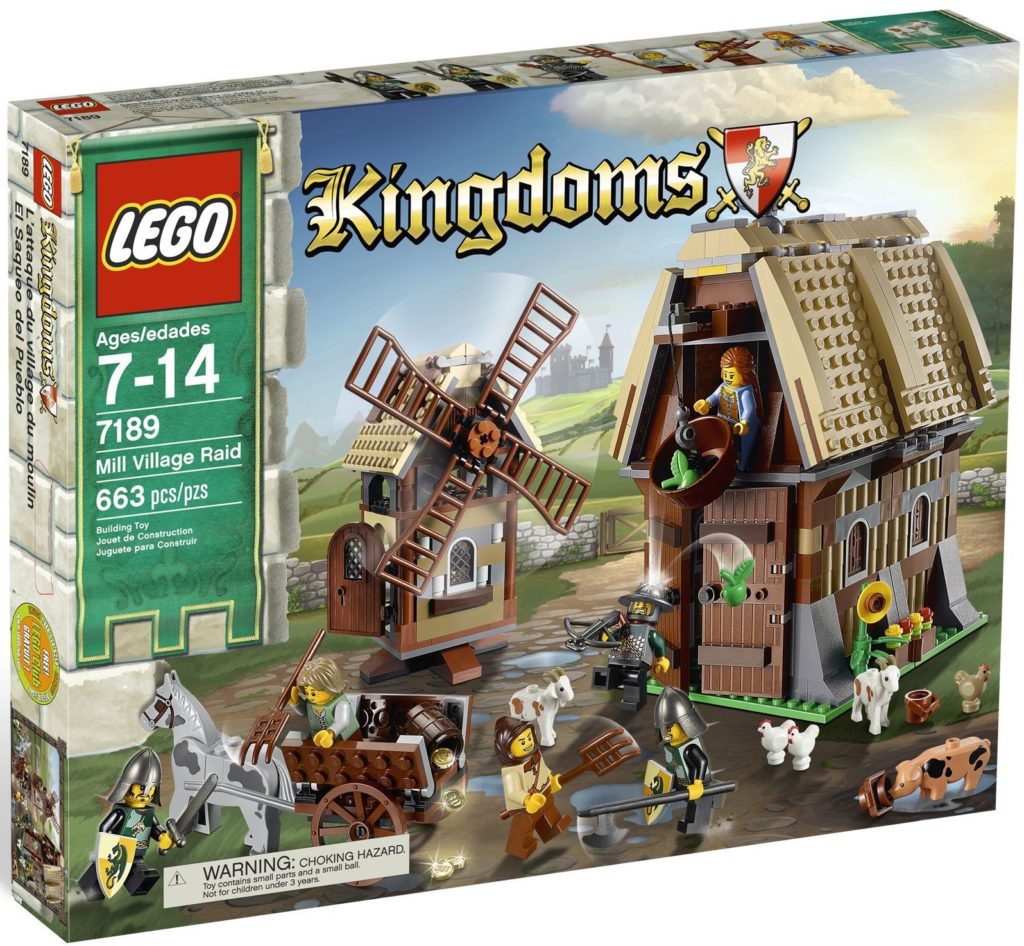
At around the same time, the LEGO Group came up with a distinct approach to new animals: anything meant to represent a live animal would be sculpted and moulded, while any statues of animals would be brick-built. (7189 Mill Village Raid includes both moulded chickens and a brick-built bird for its wind vane, for instance.)
That meant the company needed a new mould for its first-ever goat – and what would become one of the rarest LEGO animals of all time was born. Groves and the design team managed to cram two goats into 7189 Mill Village Raid – a set that originally retailed for just £66.99 / $69.99 in 2011 – alongside a horse, pig and three chickens.
But that was the beginning and the end of the goat’s run in official LEGO sets. It’s pretty rare these days that a new mould is only used in a single set – LEGO designers often talk about the need for versatility when coming up with new parts – but according to Crecente and Vincent, not one designer found a use for the goat for another eight years. By the time someone did, it was too late.
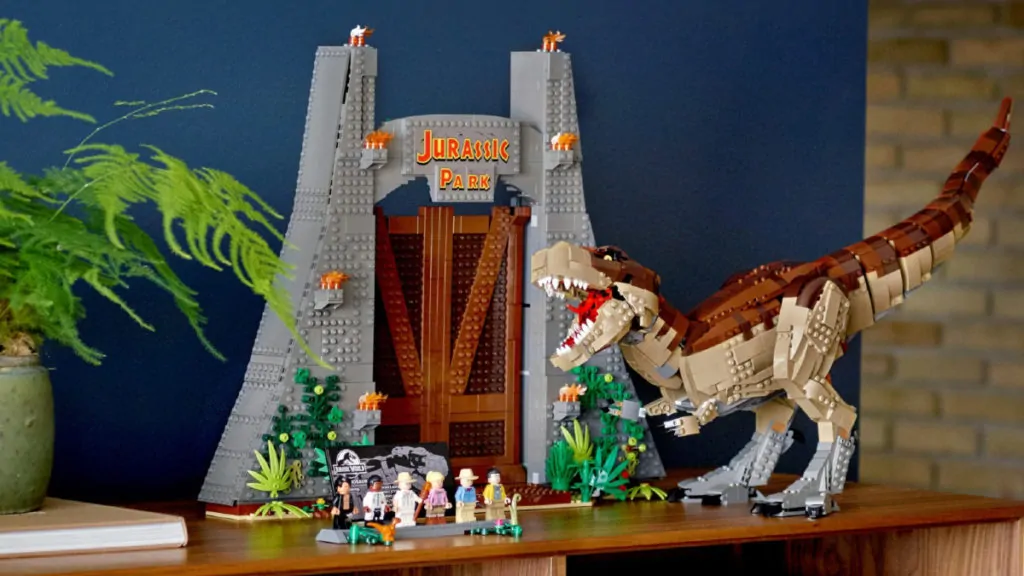
In the late 2010s, LEGO designer Mark Stafford was working on 75936 Jurassic Park: T. rex Rampage, a 3,120-piece ode to the original Jurassic Park movie that includes a giant, brick-built T. rex. And it was within that 2019 set – and the wider context of the 1993 film – that Stafford sought to resurrect the LEGO goat.
“The first time that the T. rex turns up in Jurassic Park is on the tour that John Hammond is giving his grandchildren, and for some reason he thinks it’s really sensible to tie a goat up next to the fence to attract the T. rex to show to his grandchildren,” he explains. “And the next thing you know there’s half a goat landing on the transparent sunroof of the car that the kids are in.
“I just felt bad for the goat, and to me if the LEGO company wanted to do a goat and a T. rex set, the goat would be living happily inside the T. rex’s belly. So when you build the model you place the goat in the belly and then continue to build and when it’s finished you can’t see the goat, but you know it’s there. And you know it’s okay, and it’s in one piece, there’s not half of it on top of a sunroof anywhere.”
- The LEGO goat now costs as much as a new set for one brick
- LEGO confirms that the goat could come back after all
Stafford asked the element design team if the original mould could be used to create a new goat for the set. The answer was not what he (or any of us) wanted to hear: it had been so long since it was last used that the mould had deteriorated, and a brand new mould would be required. But it was ultimately deemed too expensive for the scope of what Stafford wanted to use it for.
“If the goat was going to be on the front of the box, if it was going to be a major part in a set, yes, fine, we’ll trigger a new mould,” the designer says. “But the expense of that for an Easter egg where it’s in the belly, and it’s not going to be seen by anybody, it was too much. It’s an awful lot of money to spend just for a little LEGO humour.”
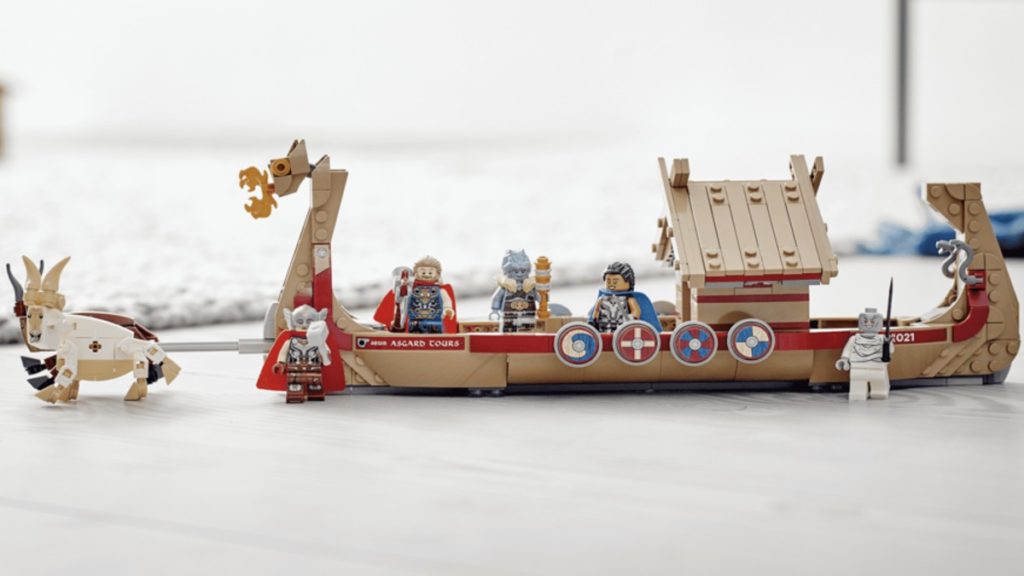
Stafford contemplated trying to resurrect the goat again in 2022, for the Thor: Love and Thunder set 76208 The Goat Boat. But the animals in that set were so wacky that the moulded LEGO goat would have apparently looked ‘too ordinary’, so the designer went with brick-built variants instead – citing that model as ‘another missed opportunity’ for the goat to return.
By that point, another opportunity for the animal’s comeback had already come and gone in 21325 Medieval Blacksmith. LEGO Ideas fan designer Clemens Fiedler’s original pitch for the set included a goat, but the LEGO team working to bring the set to shelves – among whom was designer Wes Talbott – swapped it out for a Husky dog.
“It was one of those cases where we basically said, ‘Yeah, we can’t make these deleted ones because we don’t have the mould any more,’ and [Fiedler] was pretty much okay with that,” Talbott explains. But the design team underestimated how much the fan community had been looking forward to the goat’s return.
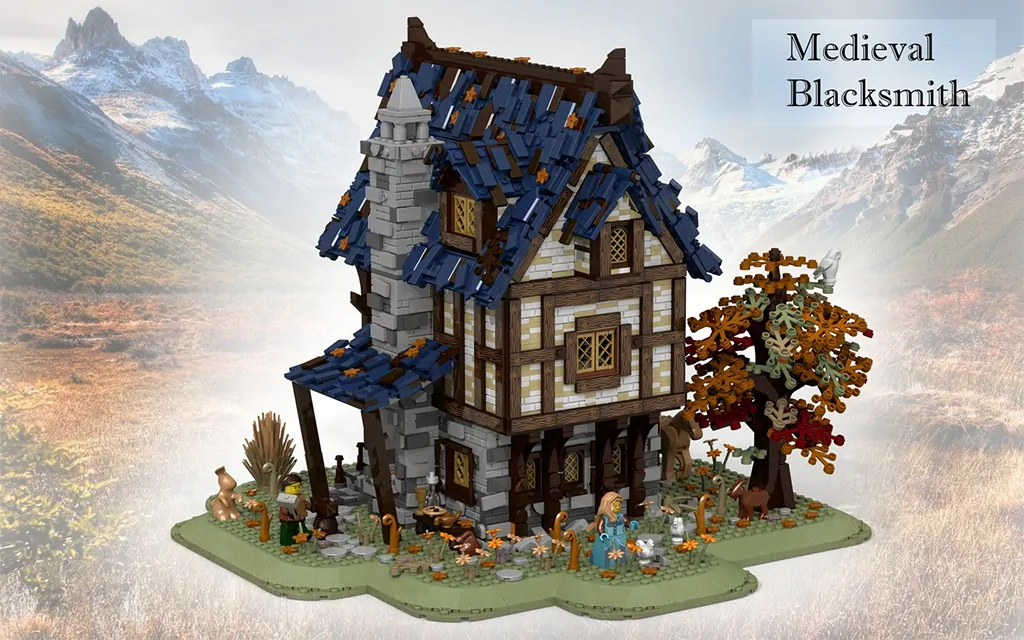
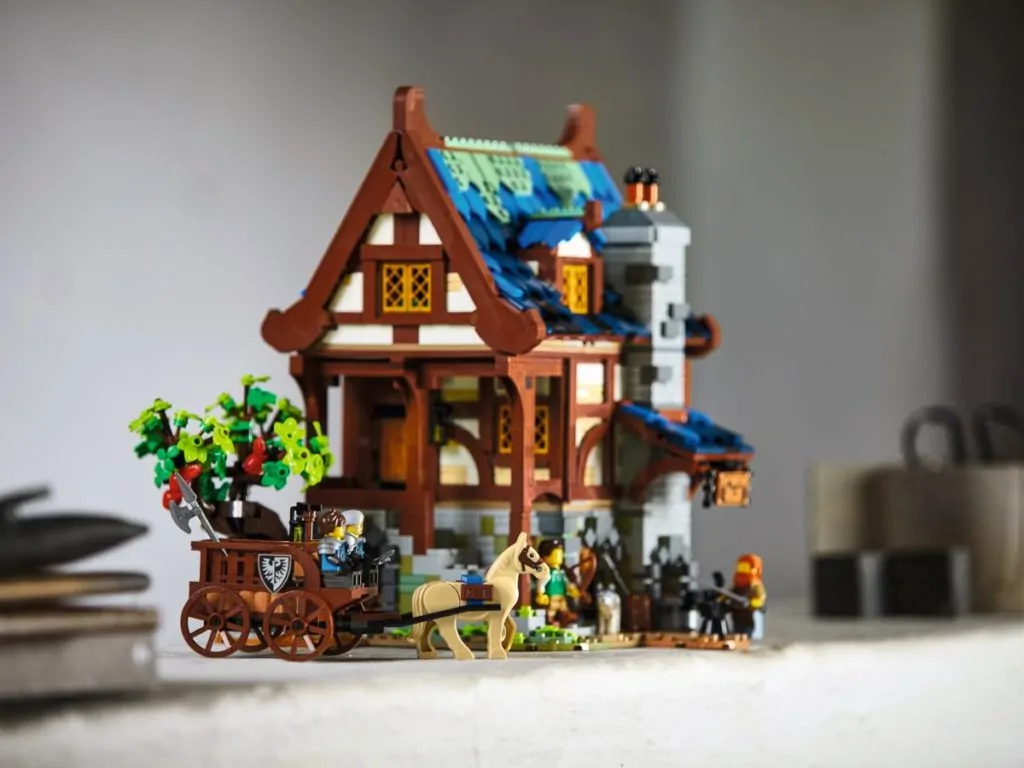
“The whole goat thing actually was not even on my radar until this model,” Talbott laughs. “It wasn’t until we released the Blacksmith as it is, without the goat, that I realised people were going to miss it that badly. I was very confused at first – it’s just a goat, I don’t get it – but as I looked into it I realised how scarce it was and how expensive second-hand it was to find, and all that stuff. So I definitely understand why people want it.
“I don’t think it would have changed [whether] we had put it in if I had known that, but we looked into it. And it’s pretty easy to look up in our system – you can find the element number and put it in, and you can just quickly see if we have the mould for it or not. So we did that for the animals but obviously yeah, [the goat] was showing up as deleted.”
For LEGO designer Nicholas Groves – one of the team responsible for originally bringing the goat to shelves, remember – the goat’s legacy has been a genuine surprise.
[bdproduct search=’icons’ sort=’discount’ numberOfRecord=’4′ brand=” sliderMinValues=’0′ sliderMaxValues=’750′]
“We definitely knew it would be appreciated – ‘I can really build my medieval universe, now I can have much more civilian representation, I can build a farm,’” he says. “We knew this would be really appreciated by the fans, but I didn’t think that some years later I’d be sitting here talking about the goat on a podcast because of the impact it had.”
The good news, according to Vincent, is that the digital files used to create the original mould are ‘likely still in storage’ in the LEGO Group’s archives. “It just requires someone recreating the mould to bring the goat back to LEGO element life,” the Bits N’ Bricks host says. If and when that will happen is still a mystery – but there may be a tease in one of the latest LEGO NINJAGO sets…
Head over to your podcast streaming service of choice to listen to the entire Bits N’ Bricks episode on the history of the LEGO goat.
Support the work that Brick Fanatics does by purchasing your LEGO using our affiliate links. Thanks!
Author Profile
- I like to think of myself as a journalist first, LEGO fan second, but we all know that’s not really the case. Journalism does run through my veins, though, like some kind of weird literary blood – the sort that will no doubt one day lead to a stress-induced heart malfunction. It’s like smoking, only worse. Thankfully, I get to write about LEGO until then.
Latest entries
Features26/04/2024LEGO Minifigures Series 26 behind-the-scenes: Alien Tourist and Blacktron Mutant
Best Deal26/04/2024LEGO Star Wars deals: 20% off Mos Eisley Cantina at John Lewis
May the 4th26/04/2024Pick up a free LEGO TIE Interceptor polybag for May the 4th
June 2024 sets26/04/2024First look at LEGO Speed Champions summer 2024 set

